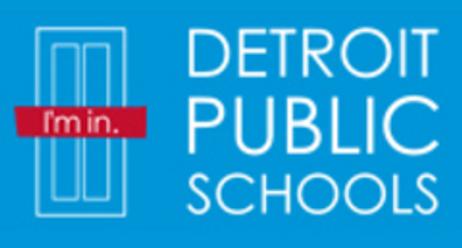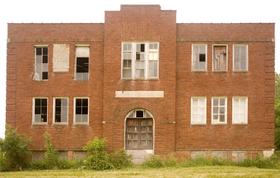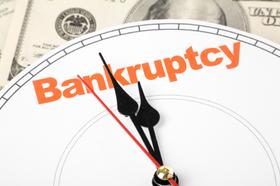Detroit Public Schools is the largest school district in the state of Michigan and the 22nd largest school district in the country. Throughout its history, this school district has overcome numerous obstacles to bring education to the young residents of Detroit. That process has not been without its share of challenges, which continue in Detroit schools today. However, the district remains strong despite its difficulties and is continuously looking for ways to improve educational quality for all Detroit students.
This video offers an overview of the Detroit Public Schools.
Early Schools in Detroit
According to the Detroit Historical Society, early schools in the city began in the 19th century, when private individuals began developing subscription schools for the purpose of educating the youth of the city. These schools would have a single schoolmaster, hired by a group of parents, and classes would be held at the home of the instructor or a location rented by subscribers. Parents of the students would also contribute to the school’s supply of firewood and candles.
Throughout that century, many private schools also came to the Detroit area. The schools were expensive and provided flexible schedules for those who had to work days to pay for their education. In 1832, the first school was established for children who could not afford private schools. These “society schools” quickly grew in number, as more families looked to the only free schools in Detroit for educational opportunities. By 1837, there were three society schools in the city, which served more than 200 students.
The first Board of Education was established in Detroit in 1842, after the mayor of the city at the time, Dr. Zina Pitcher, recognized the poor conditions of the public school system. The board members served without pay and provided oversight for current schools and plans for an expansion of public education within the city. Throughout the rest of the 19th century, Detroit schools saw plenty of progress, and by 1871, every child between the ages of eight and 14 was required to attend school for at least 12 weeks every year.
Throughout the 20th century, Detroit suffered a series of growing pains as it catapulted to become one of the largest cities in the United States. The auto industry was a significant factor in their exponential growth. Other industries that contributed to the development of the city included metal crafts and railcars. As the city grew, so did its problems, with two major riots occurring in the city in 1943 and 1967. The city’s schools were not immune from the growing pains, and the district is still trying to overcome some of those challenges today.
Detroit Public Schools in the 21st Century
Today, Detroit Public Schools boasts 134 schools serving approximately 66,000 students, according to figures on Wikipedia. The school system employs more than 15,500 staff members, and teachers in the district are members of the Detroit Federation of Teachers. In recent years, the teachers in Detroit have staged two strikes – a wildcat strike in 1999 and an official strike with the backing of the union in 2006, which lasted three days. The latter strike was to protest proposed pay cuts and demand higher wages for teachers.
In addition to conflicts between teachers and district officials, Detroit Public Schools have also seen their share of financial woes. In 2006, the district was forced to lay off more than 700 teachers and more than 900 lunch aids, due to budget constraints. The district has hired two emergency managers in recent years to help the district cope with its budget crisis. The first emergency financial manager, Robert Bobb, served in the role from 2009 to 2011. In 2011, Detroit Mayor Rick Snyder appointed Roy Roberts to the post.
In recent years, the district has faced more than financial troubles – dismal graduation rates have gotten the district more attention than it would have wanted in this area. In 2008, the graduation rate for Detroit high schools was right around 24 percent, which some think led to a comment from Education Secretary Arne Duncan about his concerns over the performance of Detroit schools.
On a Positive Note
Despite the troubles Detroit Public Schools have faced, the district also has plenty to boast about when it comes to the achievement of its students. Some students from Detroit have competed well in competitions for robotics, chess, and academic Olympics. The district website boasts Detroit schools offer educational advantages to students at all their schools that include Advanced Placement programs, fine arts opportunities, and expanded time for reading and mathematics.
The school district website also states Detroit has added three state-of-the-art school buildings recently, and it has invested millions into school renovations and improvements district-wide.
This video showcases the The 84th Annual DPSCD Student Exhibition.
The school district provides netbooks to all students from grades 6-12 and now allows take-home netbooks for students in grades 8-12. The district also provides a summer academy for elementary and middle schools student to address the learning loss that often occurs over the summer months, particularly with students from low-income families.
To assist with funding concerns, the Detroit Public Schools Foundation was also formed to raise and oversee funds for public and charter schools in Detroit. The foundation relies on corporations, foundations, organizations, and individuals to provide additional funding the district can use for enrichment programs and other educational opportunities, according to the foundation’s website.
While Detroit still has some ways to go to create the type of educational environment the district wants for all of its students, progress has been made in some areas. Time will tell if this large district will be able to successfully overcome obstacles to raise the achievement level of its students overall.
Questions? Contact us on Facebook. @publicschoolreview















